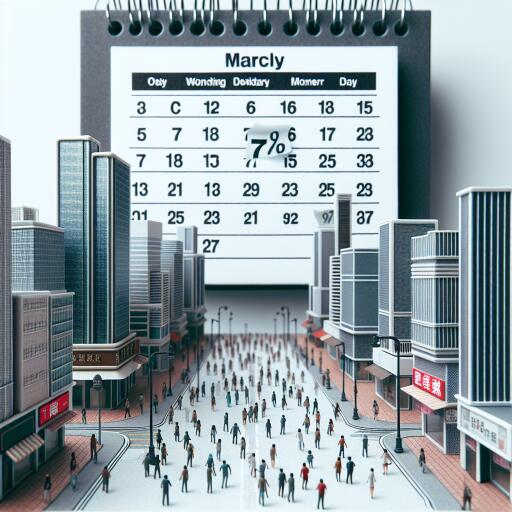HK Retail Sales Experience Downturn in March
Hong Kong witnessed a significant shift in its retail landscape as March sales saw a downturn, ending a remarkable 15-month run of growth. This change comes as local consumers pivot their spending across the border, while rising operational costs further challenge the sector. The latest figures from the Census and Statistics Department revealed a 7 percent drop in the total retail sales value for March, amounting to HK$31.2 billion (US$3.99 billion). This decline marks the first since December 2022, which had seen a modest growth of 1.2 percent year-on-year.
For the first quarter of the year, the retail sector faced a 1.3 percent decline in sales value compared to the same period in the previous year. Nonetheless, a slight improvement was observed on a seasonally adjusted basis, with sales inching up by 0.3 percent quarter-to-quarter.
A government spokesperson attributed the decrease in March’s retail sales partially to a high comparison base from the previous year’s visitor spending and the timing of the Easter holidays. Despite this setback, there is optimism for a rebound, thanks to expected increases in inbound tourism and household income. The spokesperson affirmed the government’s commitment to revitalizing the retail market through promotional activities and by fostering a mega event economy.
However, changing consumption patterns among visitors and residents alike could continue to present challenges. The government has assured ongoing vigilance in monitoring these developments.
Amidst this downturn, online sales suffered as well, accounting for 7.8 percent of the total sales in March and showing a 4.7 percent decrease year-on-year to HK$2.4 billion. Not all sectors felt the pinch equally; while the sales of medicines and cosmetics enjoyed an 8.9 percent rise in March year-on-year, luxury items such as jewelry, watches, and valuable gifts faced a steep 17.7 percent decline. Similarly, declines were observed in clothing sales (-17.5 percent) as well as sales in electrical goods and certain durable consumer goods, which fell by 15.5 percent.
The impact of local dynamics, including residents’ travel habits during the Easter holiday period, has been notable. According to Hong Kong’s Immigration Department, the city’s residents undertook nearly 1.76 million outbound trips from March 29 to April 1. Conversely, during the same period, visitors from the Chinese mainland and other regions totaled 400,369 inbound trips.
The provisional estimate for March mirrors the volume of total retail sales, which fell by 8.6 percent year-on-year. Annie Tse Yau On-yee, chairwoman of the Hong Kong Retail Management Association, reflected on the retail performance this April, indicating it was weaker than in the previous year. Tse suggested that the absence of extended holidays for mainland visitors in April contributed to the lackluster performance compared to when the Easter and Ching Ming Festival holidays aligned in April 2023.
Furthermore, April faced additional challenges such as adverse weather conditions and high-interest rates, dampening retail activity. Even the commencement of the Labor Day Golden Week on the mainland on May 1 did not significantly buoy the spirit of retailers, with most reporting a year-over-year decline in business on the first day of the holiday period.
The evolving retail environment in Hong Kong underscores the sensitivity of the sector to local and regional dynamics, including tourism flows, consumer behavior changes, and broader economic factors. As the city navigates these complexities, the retail industry’s adaptability and resilience will be keys to its recovery and future growth.
